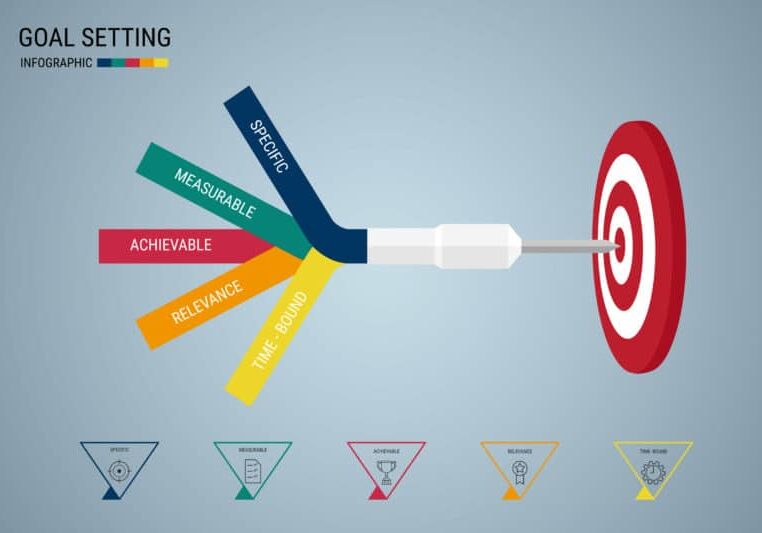7 Goals For Your Website You Should Have This Year

By Prebuilt Sites Team
January 26, 2022
EDITOR’S NOTE: Do you ever find yourself just mindlessly maintaining your strategy or posting the same ole content on your site? I’ll be the first to admit that we’ve all been there! While you’re busy planning out your goals for the year, check out these 7 specific goals for your website from Layout that you may want to add to your list this year. Maybe you want to blog more regularly, drive more traffic to your site, increase social media shares, or have higher conversions. Keep reading to learn how to accomplish these goals for your website, or reach out to us at Prebuilt Sites or The BBS Agency. We’d love to help you reach your business goals!
Have you ever thought about setting specific goals or objectives for your website? It’s easy to get into the habit of just “maintaining” your site. You may update your content, add blog posts now and then, and even keep an eye on your website traffic. But without specific goals, it’s very difficult to know how any of that translates into success.
I’m not here to talk about meaningless numbers that you’ll forget about in a couple of months. Instead, your goals should be specific and measurable. They should be achievable, but should also push you!
What is the purpose of your website?
Before you sit down to make your list of website goals, you need to know why your site exists. What action do you want your site visitors to take? What do you want them to do or know after they’ve left your site?
Here are a few common examples of website goals:
- You want your site to capture leads. This could mean that potential customers fill out a contact form, sign up for your email list, visit your physical location, or give you a phone call.
- You want your site to convert leads. Online purchases, in-store purchases, donations, new subscribers, and more volunteers are all examples of conversions.
- You want your site to inform your audience. You may want to show them that you know what you’re talking about, explain your services, or provide information about a topic.
What website goals should you set?
Once you’ve defined the purpose of your site, you’ll want to keep that in mind with every decision you make.

Photo: Layout
Your specific website goals will vary based on your business, but here are just a few ideas to get you started!
1. Start blogging regularly (once a week, twice a month, etc.)
Regular blogging can be helpful in so many ways! It helps you show your site visitors and potential customers that you know what you’re talking about and allows you to teach and share important topics within your industry.
Plus, Google really values both relevance and quality when it considers your website ranking. You want your blog posts to provide value for your website visitors, answer their questions, and do so thoroughly.
Struggling to be consistent or to come up with topic ideas? Try using an editorial calendar to map out your blog posts. Built Visible has a list of great editorial calendars you can use for free. And Mention has some great ways to generate topic ideas, like answering your clients’ questions and using Google AdWords keyword planner.
2. Drive more traffic from your target audience to your website.
Increasing website traffic is one of the most common goals that I see business owners make. But website traffic alone means nothing if it’s not the right kind of traffic. That’s why it’s so important to both understand your target audience and understand how to reach that target audience! Even if you get millions of site visitors, if they’re not the right people to purchase your products or services, it won’t matter.

Photo: Layout
Set a goal based on your current traffic. Typically, this would be a percentage increase, such as 20% more traffic in 2018. You can use tools like Google Analytics to track both your website visitors as well as their demographics (gender, location, etc.).
So how do you make that traffic consist of your target audience? Here are a few ways:
- Work on optimizing your website for SEO to attract site visitors searching for what you offer. Learn how to perform an SEO audit for your site here.
- Write guest posts for other blogs in your industry.
- Use Google AdWords to send ads to your target audience.
- Write regular blog content that will appeal to your audience and answer their questions.
- Co-host a webinar or training with an influencer that has a similar target audience.
- Use social media (organic or paid) to engage your potential customers.
3. Decrease your bounce rate.
Your bounce rate is the percentage of people who leave your site after just going to one page. Of course, you want your site visitors to stay as long as possible and, ultimately, convert!

Photo: Layout
Try setting a goal to decrease your bounce rate by a certain percentage, like 10%. Then, you can use Google Analytics to track your bounce rate and see what pages are causing your site visitors to go elsewhere. Here are a few ways that you can improve your bounce rate:
- Review all content for improvements. Is your content easy to read and understand? Do you discuss relevant topics? Is your text broken up in an effective way (using bullet points, images, etc.)?
- Check your website speed using tools like Google PageSpeed or GT Metrix. A slow site is a great way to send your visitors somewhere else.
- Make sure your site is easy to use on all screen sizes, mobile devices, and browsers.
- Ensure that your site is easy to navigate and that your visitors can find what they’re looking for within seconds.
- Make sure your images are optimized for web (otherwise they’ll slow down your site).
- Consider whether your pop-ups are turning your visitors away. Rather than being effective, they can sometimes just annoy your users.
4. Raise your conversion rate.
While driving more relevant traffic to your site can increase the number of conversions by default, your conversion rate is a percentage of people that convert on your site. By increasing your conversion rate, you can take better advantage of your marketing efforts and site traffic. Here are a few ways to improve your conversion rate:
- Use appealing calls to action
- Set up retargeting ads to appeal to previous site visitors
- Create a clear, effective sales funnel
- Remove unnecessary distractions on your site (like pop ups and ads)
- Clearly explain why your products/services are unique, trustworthy, and valuable
5. Increase your email subscribers.
Email subscribers provide a great opportunity to keep your existing customers informed, encourage repeat sales, and continue to communicate with potential customers. It can be an extremely effective way to make sales!
A great goal is to use your website to capture a specific number of emails. You can do this by offering your site visitors something in exchange for their email address – a free resource library, valuable tutorials, an eBook, a coupon code – whatever might apply to your business.
6. Increase social mentions.

Photo: Layout
Social mentions are the conversations that are happening on social media about your company. They’re a great way to organically reach your customer base!
Here are a few ways to focus on getting more social media shares and mentions:
- Add a click to tweet option to your site. This will make it easy for your readers to tweet a relevant, sharable snippet from your blog posts.
- Create more calls to action that encourage your visitors to share your posts on social media.
- Find ways to make it easier to share from your site. This could be adding a “Pin It” button to your images or including social share buttons in your blog sidebar.
7. Make your website more accessible.
Accessibility is incredibly important for your website as it allows those with hearing impairments, vision impairments, difficulty using a mouse, etc. to easily use your website. While making your website accessible isn’t measurable in the same sense as some of the other goals I mentioned above, it’s still an important goal to work toward.
Here are some ways to make your site accessible:
- Add descriptive, relevant alt tags to all of your images to help screen readers “read” your pictures.
- Make sure that your entire site works with only a keyboard, without the help of a mouse.
- Use descriptive links that tell people what they’re clicking on, rather than text like “read more.”
- Add useful headers to describe the content that follows.
- Download a free screen reader (like NVDA) to test the entire site.
Above all, make sure that the goals you set are part of an overall marketing or website strategy. They may vary depending on your industry, your products or services, where your site is right now, and other factors. But they should be a step in the direction of accomplishing your business goals.
Originally posted on Layout.

